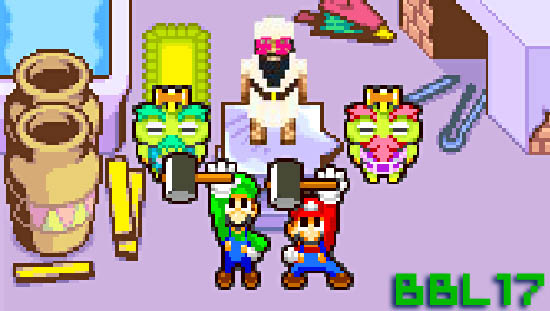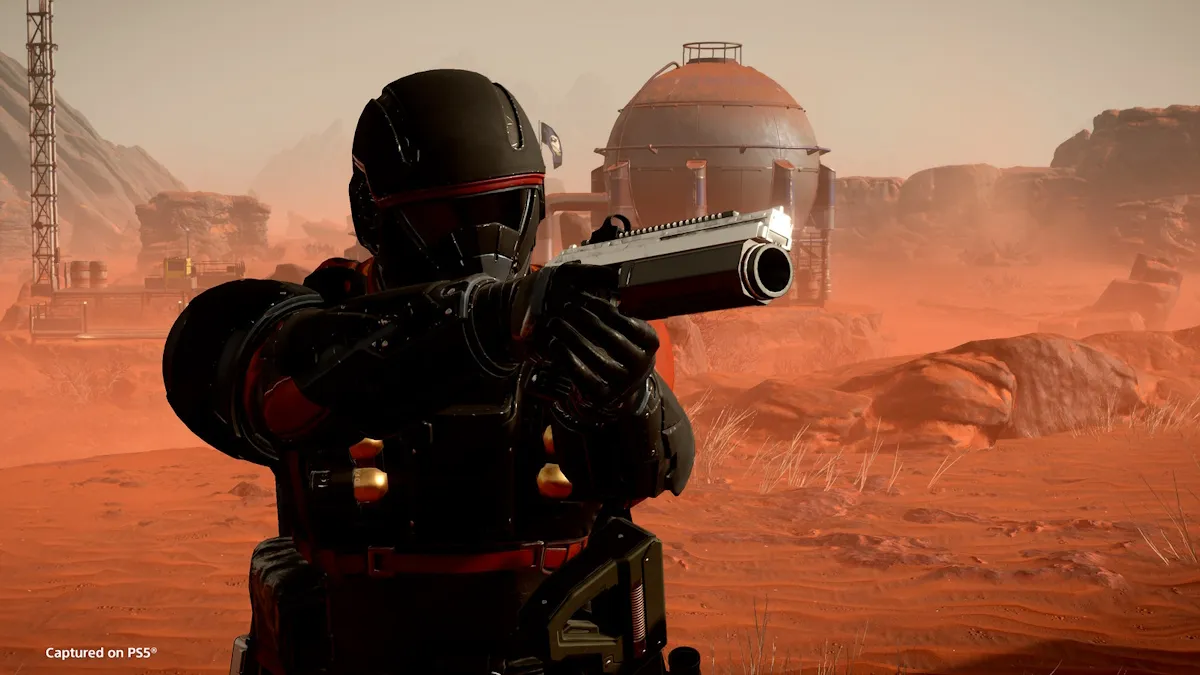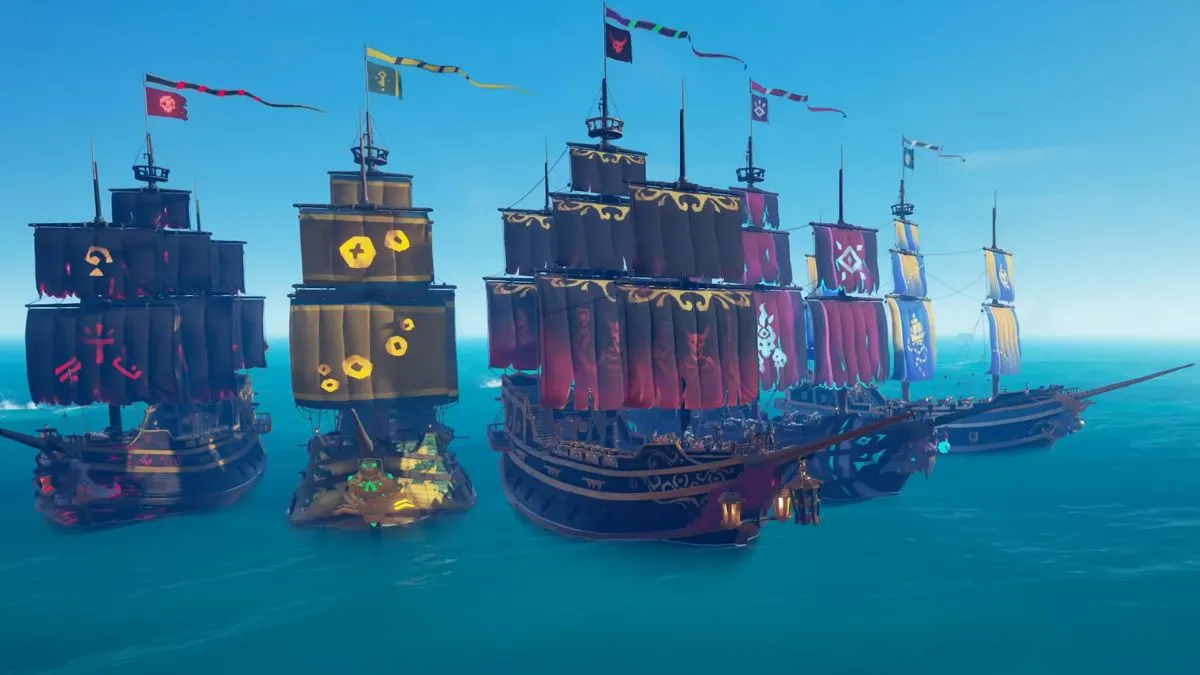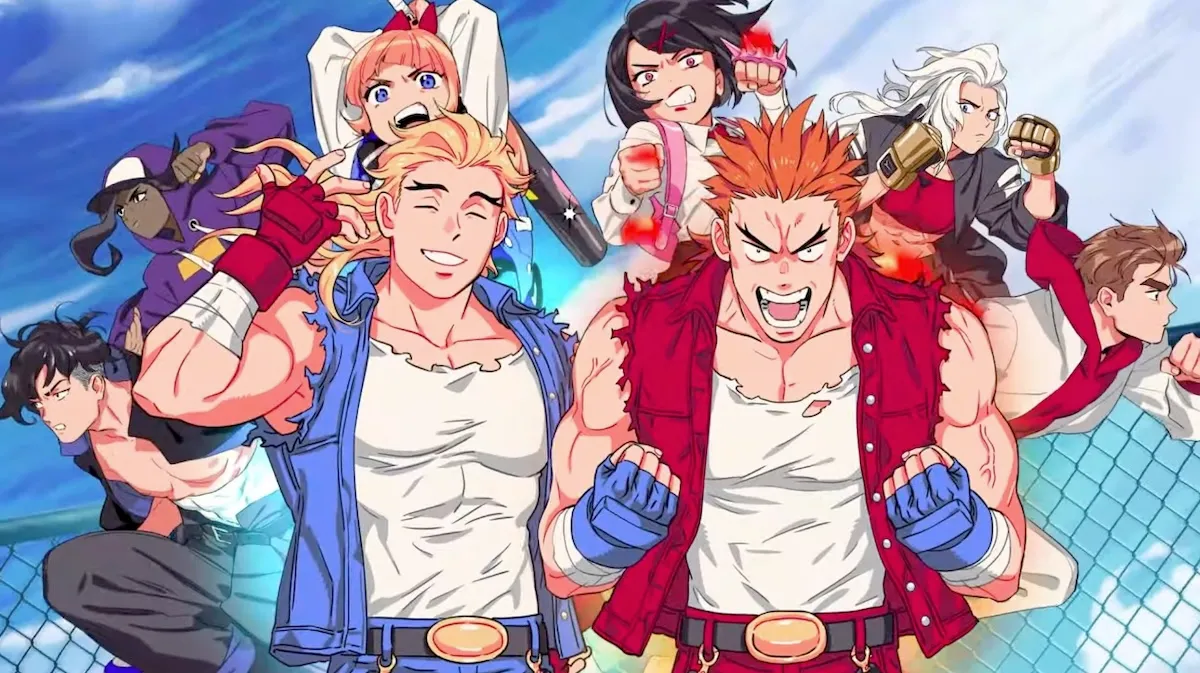There’s a particular point in this week’s BBL that I’m going to say now, because I’ll invariably get kicked in the face for saying so — let’s get the face-kickin’ out of the way as quick as possible. I hold firm the belief that this week’s selection, Mario & Luigi: Superstar Saga, is the best Mario RPG ever made, even over series grandpappy Super Mario RPG. It’s a weighty claim, but one that I make with the sort of conviction usually reserved for only the mightiest of bribes — which reminds me, Nintendo, just leave the check under the doormat.
Anyways, I’ve got plenty of reasons for making such a suggestion: amazing visuals, outstanding writing, a combination of nü-RPG standards with all-in-the-timing reflex gameplay, and a ridiculously low price. Can you beat that? I submit that you can not. Should you have readiness for what is to come, I implore you: hit that jump, read that text and buy this game!
Mario & Luigi Superstar Saga (GBA)
Developed by: AlphaDream
Released: November 17, 2003
Bargain Binned: $3-10 in brick and mortar shops and eBay, 200 points ($10) at Goozex.
By the by: The dude playing the game in this YouTube video? He sucks.
Goddamn, I love the Mario RPGs. They serve as some of the best windows into an otherwise underdeveloped universe (that, y’know, requires little to no story anyway) you’re bound to find in our collective pastime — lots of ways to enrich the Mario franchise, lots of new directions to go. They’ve also gone a long way to introduce classic gameplay elements into the bread-and-butter menu-based RPG with action commands — the ability to boost attack or defense power by hitting a button at the point of impact. These concepts were introduced in Super Mario RPG, developed in Paper Mario and damn near perfected in Mario & Luigi, which stands apart from its bretheren as perhaps the most unconventional of the bunch.
Like most Mario titles, Saga kicks off with some Princess trouble, sans the typical crew of Bowser and cronies — rather, the evil witch Cackletta shows up to steal Peach’s voice, replacing her feminine tones with bloated, crumbling wingdings that fall from text boxes and bring ruin to everything around her. Mario and Luigi report on the scene just in time to find Bowser hesitant to carry on with his nine-to-five; capturing Peach in such a state would put a serious hurt on his fortress, after all. An alliance is quickly struck: Bowser offers to shuttle Mario in his airship in Cackletta’s last known direction to retrieve Peach’s voice, put things back the way they were, and get on with the usual “our Princess is in another castle” fare. Bowser’s ship is disabled in the skies above the neighboring Beanbean Kingdom, where Mario and Luigi’s adventure begins.
In this particular branch of the MRPG pantheon, the player is allowed to control both Mario and Luigi simultaneously by pressing either the A or B buttons, respectively. This style of play manifests in the battles as well as the world map, and it does so in a similar fashion. When getting around the vast Beanbean Kingdom, one brother leads the other, and the order can be swapped at any time by a quick press of the start button. As you make your way through the game, new abilities will be gained that will give you greater access to some of the higher and farther reaches of the world, such as a high jump or spinning long jump. The game makes creative use of these abilities in exploration and some pretty wicked puzzles that will impede your progress; it’s a great touch that makes getting from A to B as much fun as the battles that you’ll fight along the way.
The battles unfold in a manner typical of most RPGs, but as soon as the commands are given, the similarities end. Mario and Luigi have a range of attacks at their disposal from the good ol’ jump and stomp to the classic hammer, attacks which are often suited for one brand of enemy over the other. Once an attack and a target have been selected, the pair swing into action, leaping upon or approaching the enemy with hammer firmly gripped. By hitting the appropriate button (A for Mario, B for Luigi) at the right time, additional damage or critical hits can be dealt upon the enemy. Additionally, enemy attacks can be dodged with a well-timed leap or swatted out of the air with hammers, but again, this takes some careful timing.
As the game goes on, the means by which Mario and Luigi both dole out and receive punishment expands by leaps and bounds. Enemies might launch volleys of projectiles that must be watched closely to respond with an appropriately-timed leap, or sweep the field of play with a laser or chain that Mario and Luigi must hop in succession to avoid damage. The variety of attacks hurled at the player by Saga‘s endgame bosses will definitely keep you on your toes — step one is identifying the pattern, and step two is reacting quick enough not to get your ass handed to you. Mario and Luigi, on the other hand, will gain new team abilities called Bros. Attacks, in which the pair will perform a cooperative feat of acrobatic face-pounding. It’s not so simple as just selecting them, though — the player must hit the appropriate button at just the right time in rapid succession to pull off the attacks. The game will ease you into these sequences at first, slowing down the animation at critical moments, but you’ve got the option of removing these helpful features to deal out more damage — definitely a choice you’ll want to make as you become more intimate with the combinations necessary to successfully pull off a Bros. Attack.
That’s a lot to belch at you, but what it adds up to is one of the most unique RPG experiences yet available on console or handheld; a system that keeps gameplay fresh and fun throughout the entirety of the game. Where encounters (random or otherwise) might wear thin on the player in other RPGs, the battles in Saga are never passive — you can’t just slam the A button and expect to come out on top. It’s this style of play that makes Mario & Luigi one of the most exciting RPG series out there.
I’m more or less convinced that the greatest writing in the game industry is almost wholly represented by Nintendo of America’s fabled Treehouse, the team responsible for the big N’s overseas localization. Having moved beyond the all your base era in which quirky, poorly-translated or otherwise unreadable text was more or less the standard, the quality of writing in games has risen significantly but is rarely the sort of material that knocks you over. Nintendo, on the other hand, has maintained a tradition of some of the funniest script you’re bound to read on screens large or small, a tradition built upon the Paper Mario and Mario & Luigi series of titles. One of the game’s most memorable characters, Cackletta’s right-hand man, Fawful, is perhaps the most telling example of this aspect of the game — his manner of speaking is unusual at best and absolutely insane at worst. From the game:
“Princess Peach’s sweet voice will soon be the bread that makes the sandwich of Cackletta’s desires! And this battle shall be the delicious mustard on that bread! The mustard of your doom!
Like the other MRPGs, Saga is a game that simply refuses to take itself seriously and has loads of fun with almost every convention hard-wired into Mario games. It’s rich with references that’ll please the hell out of gamers familiar with the plumber’s storied history, but not so saturated as to leave anybody out — it’s stuffed with humor that owes a great deal of its worth to the game’s wacky visual style. Lead scenario designer Hiroyuki Kubota put down some seriously awesome groundwork for the game’s story which was subsequently polished the only way Nintendo knows how. Mario & Luigi is a top-to-bottom testament to the quality of Nintendo’s in-house R&D.
A word on the sequel: although Mario & Luigi: Partners in Time on the DS isn’t quite BBL-priced just yet, it’s definitely worth looking into if the original tickles your fancy. Between the two, though, I’d probably recommend the original over its sequel — while it makes excellent use of the DS’s expanded controls and has a similarly brilliant localization, they tweaked the battle system in a direction that I thought took the pure, raw edge down a peg or two. Again, they’re both brilliant titles and I’d recommend the hell out of either one of them, but with a gun to my head — well, you get the idea.
If you skipped this game for lack of cash, something you wanted more, a date, or a funeral, it’s time to make amends with your past mistakes and put things right. This is definitely one of the best games on the GBA, and at a price under ten bucks, it’s an absolute steal. Don’t delay any longer! Buy this game!




